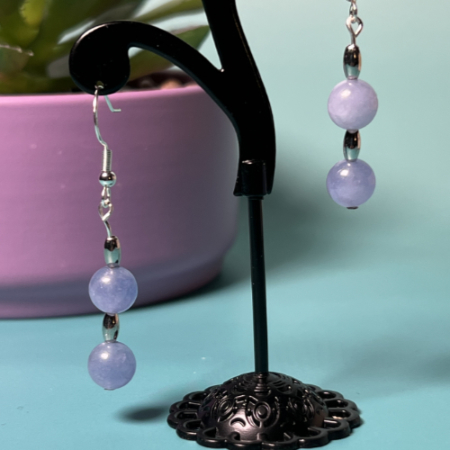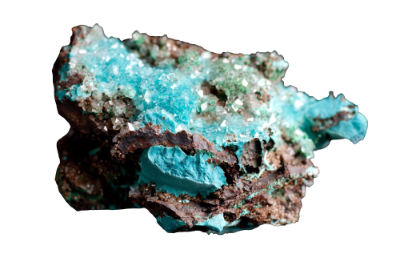
Have you ever looked into an aquamarine gemstone and felt like you were staring straight into the heart of the ocean? With its soft blue hues and glistening clarity, aquamarine has long been treasured for its serene beauty and calming energy. But did you know that the journey from sea-colored crystal to sparkling piece of aquamarine jewelry is just as magical as the gem itself?
Let’s take a behind-the-scenes look at the fascinating journey of aquamarine jewelry — from its natural origins deep within the Earth to the handcrafted designs I proudly offer at Scott Jewelry Design.

The Birth of Aquamarine: Nature’s Ocean-Hued Gem
Aquamarine, whose name literally means “water of the sea,” is a variety of the mineral beryl — the same family that gives us emeralds. Its stunning blue-green color comes from traces of iron, and its formation begins deep within the Earth’s crust, where heat and pressure work together over millions of years to create this beautiful gemstone.
Despite its name, aquamarine isn’t found in the ocean. Instead, it’s mined from rugged mountains and riverbeds around the world. Some of the most prized sources include Brazil, Pakistan, Nigeria, and Madagascar. Each region produces aquamarines with slightly different shades, ranging from icy blue to deeper teal — a palette that jewelry designers love to work with.

From Rough Crystal to Radiant Gem
Once aquamarine is mined, the stones are carefully sorted and examined for quality. The next step in their journey is cutting — an art form that transforms rough, cloudy crystals into brilliant, faceted gems that capture and reflect light.
At Scott Jewelry Design, we pay close attention to the character of each stone. Is it best suited for an emerald cut to show off its clarity? Or would a pear shape enhance its soft, watery glow? Every aquamarine has its own personality, and we love letting that shine through.
After cutting comes polishing, where skilled artisans bring out that glassy, ocean-like finish aquamarine is so well known for. When polished to perfection, the stone looks like a drop of sea water captured in time.
Designing Aquamarine Jewelry with Meaning
Aquamarine isn’t just a beautiful gem — it’s also steeped in symbolism. Historically, it was believed to be the treasure of mermaids, used by sailors as a talisman for safe travels across stormy seas. It’s also known as a symbol of clarity, calm, and communication — perfect for anyone who values inner peace or wants to express themselves more freely.
When we design aquamarine jewelry, we don’t just focus on style — we also think about story. Whether it’s a delicate aquamarine pendant to celebrate a March birthday (aquamarine is the March birthstone!), or a bold statement ring for someone drawn to oceanic energy, each piece carries a bit of intention and inspiration.

From Our Studio to Your Jewelry Box
Once the stone is polished and the design is set, it’s time for the setting process. At Scott Jewelry Design, we handcraft each piece in our studio with care and precision. We choose metals that enhance the cool tones of aquamarine — think bright sterling silver, gleaming white gold, or even contrasting rose gold for a touch of warmth.
Our goal is always to highlight the natural beauty of the stone. Sometimes that means a minimalist solitaire ring that lets the aquamarine take center stage. Other times, it might involve surrounding the gem with sparkling diamonds or pairing it with other colored stones for a custom look.
One of our favorite expressions of this beauty? Our Aquamarine Necklace and Earrings Set — a graceful pairing that brings out the best in this ocean-inspired gem. Whether you’re dressing up for a special occasion or adding a calming touch to your everyday style, this set adds elegance and tranquility with every wear.
Why I Love Working with Aquamarine
To me, aquamarine is more than just a gem — it’s a little piece of tranquility, a whisper of the sea, a gentle reminder to breathe deep and stay centered. It’s a joy to work with, both technically (its clarity and durability make it ideal for everyday jewelry) and artistically.
Whether you’re treating yourself to a new favorite necklace or searching for the perfect gift, aquamarine jewelry offers beauty, meaning, and timeless charm all in one shimmering package.
Start Your Aquamarine Jewelry Journey Today
If you’ve been dreaming of something soft, serene, and effortlessly elegant, aquamarine jewelry might be just the thing. Explore our full collection or take a closer look at my Aquamarine Necklace and Earrings Set below — it’s the perfect way to begin (or continue) your aquamarine journey.
After all, every aquamarine has a story. Maybe yours is just beginning.
In My Shop
Aquamarine Necklace and Earrings Set
This Aquamarine Necklace and Earrings Set is composed of 8mm and 10mm Natural Aquamarine, silver-plated oval and round spacer beads and toggle clasp and ear wires
1 in stock
Sources
(1) Wikipedia





